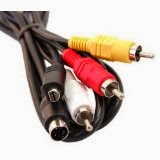Take My Pictures: A Guide To Pet Portrait Photography

 Pet Portrait Photography is very popular these days. It's natural! You love your pet so much that you treat him like family. There are photographers who are expert on taking pet pictures but you can always do it in the comfort of your own home. Simply ready your digital camera at all times. Read on to find more hints on how to take better pictures of your pets.
Pet Portrait Photography is very popular these days. It's natural! You love your pet so much that you treat him like family. There are photographers who are expert on taking pet pictures but you can always do it in the comfort of your own home. Simply ready your digital camera at all times. Read on to find more hints on how to take better pictures of your pets.The Candid Shot
You cannot really expect animals to pose for you, can you? They are naturally active and highly temperamental. They rely on instinct all the time so as long as they are stimulated, you must expect distractions to come your way. It is just impossible to teach the animals take the pose you exactly want them to do.
So instead, be like paparazzi! Catch them doing something cute and clever and funny; or when you think they're about to do something very mischievous, sneak up on them and start clicking away. You'll be surprised at how good the pictures were taken.
Making Your Pet Look Its Best
A well-groomed pet is always comforting to look at. There are unexpected moments of clumsiness like when they run into a puddle of mud that you may want to remember. If your pet goes to the groomer regularly, then you will have more chances of catching them at their best. But be aware that whenever dogs or cats with long hair are given a shorter hair-cut, they are prone to get a little bit depressed, so taking photos right after won't harness good results.
Moods and Swings
You are probably familiar with your pet's behavior by now; as to whether they feel most sleepy after they're fed or if they're playful during the mornings when it's not too hot or too cold. If you want to take a photo of them in a specific mood, try to know the patterns when these moods are usually exhibited.
As Close as Possible
The cutest photos are the ones that show the face. And because pets are normally smaller than humans, you might need to really get down to get a clear view of their eyes or get a close shot of their faces. Zoom lenses are very helpful for taking photos of pets – that is if you can't get close enough to them.
Plan the Scenes
Carefully plan your scenes. If your cat likes to play with toys then make sure to have loads of them around. If your dogs like to chew, give them bones to play with or doggie toys they can throw and bite, too.
Sprinkle colors in the area and make sure there is adequate light. For a more airy effect, adjust the brightness of your camera; add a little contrast if you want to expose the light in their eyes. There are a million ways to catch your pet doing something cute. As they are, we're sure they're already fascinating to look at and that's exactly what you want to remember about them. Pet portraits are great keepsakes so practice on the techniques of pet portrait photography and experiment on other ways to add beauty to your pet's pictures!

























0 comments: